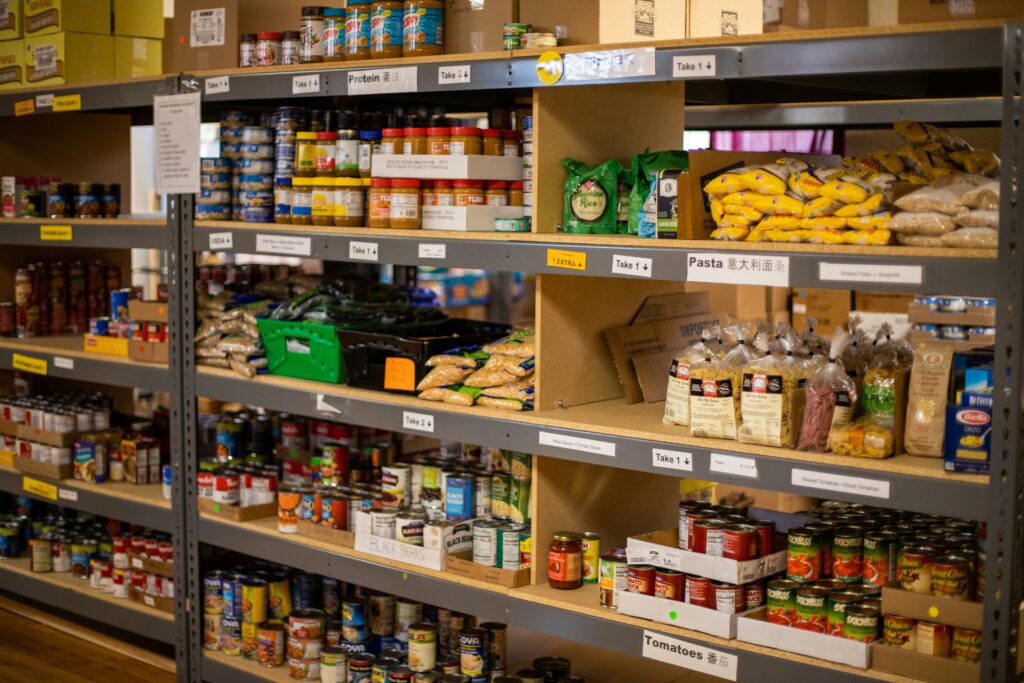Food insecurity is a critical issue affecting urban communities across the globe. In cities where economic disparity, social inequality, and environmental challenges intersect, the lack of access to nutritious food can lead to severe consequences for residents. Addressing food insecurity in urban communities is essential for improving public health, social stability, and economic resilience. This blog post explores the multifaceted impact of food insecurity on urban communities, drawing attention to the importance of comprehensive solutions.
Understanding Food Insecurity
Definition of Food Insecurity
Food insecurity refers to the state in which individuals or families lack reliable access to sufficient, affordable, and nutritious food. It encompasses both the inability to acquire enough food and the inability to obtain nutritious food that supports a healthy lifestyle. Food insecurity is a prevalent issue in many urban areas, where socioeconomic disparities are often pronounced.

Causes of Food Insecurity in Urban Areas
Economic Factors
One of the primary causes of food insecurity in urban communities is economic instability. High living costs, unemployment, and underemployment can severely limit an individual’s ability to purchase nutritious food. In many urban areas, the cost of living outpaces wage growth, making it difficult for families to afford healthy meals. Additionally, economic downturns and recessions can exacerbate these challenges, leading to an increase in food insecurity rates.

Social Factors
Social inequality also plays a significant role in food insecurity. Marginalized groups, including racial minorities, immigrants, and low-income families, are disproportionately affected by food insecurity. Discrimination and systemic barriers can limit access to resources, including food assistance programs. Furthermore, social stigmas associated with seeking food aid can prevent individuals from accessing the support they need, perpetuating the cycle of food insecurity.

Environmental Factors
Environmental factors such as urban sprawl, lack of green spaces, and food deserts contribute to food insecurity. Food deserts are areas where residents have limited access to affordable and nutritious food due to the absence of grocery stores or fresh produce markets. Urban environments often exacerbate these issues due to high population density and inadequate infrastructure. Climate change and extreme weather events can also impact food availability and prices, further complicating the food security landscape in urban areas.

Statistics and Trends on Food Insecurity in Urban Communities
Recent studies indicate that food insecurity rates in urban areas are higher compared to rural areas. According to the USDA, nearly 14% of urban households experience food insecurity, with higher rates observed in cities with significant economic and social disparities. The COVID-19 pandemic further exacerbated food insecurity, highlighting the vulnerability of urban communities to economic shocks. In many cities, food banks and community organizations reported unprecedented demand for food assistance, revealing the extent of food insecurity.
The Impact of Food Insecurity on Urban Communities
Health Impacts
Physical Health Effects
Food insecurity leads to numerous adverse health outcomes. Individuals lacking access to nutritious food are more likely to suffer from malnutrition, obesity, diabetes, and cardiovascular diseases. The consumption of low-cost, high-calorie, and nutrient-poor foods, often the only option available in food deserts, contributes significantly to these health issues. The long-term health effects of poor nutrition can lead to increased healthcare costs and reduced quality of life.
Mental Health Effects
The stress and anxiety associated with food insecurity can have profound effects on mental health. Individuals facing food insecurity often experience depression, anxiety, and chronic stress, which can exacerbate physical health problems. The uncertainty of not knowing when or where the next meal will come from creates a pervasive sense of insecurity. Children in food-insecure households are particularly vulnerable to mental health issues.
Chronic Diseases Linked to Food Insecurity
Chronic diseases such as hypertension, diabetes, and heart disease are closely linked to food insecurity. Poor dietary habits, influenced by the lack of access to healthy foods, contribute to the development and progression of these conditions. Addressing food insecurity is crucial for preventing and managing chronic diseases in urban populations. Preventive measures, such as improving access to healthy foods and providing nutrition education, can help mitigate the health impacts of food insecurity.

Social Impacts
Community Dynamics
Food insecurity can strain community relationships and social cohesion. When basic needs are unmet, individuals may become isolated, and community support networks can weaken. This fragmentation can lead to increased crime rates and social unrest, further destabilizing urban areas. Strong community bonds are essential for resilience, and food insecurity can erode these bonds, making it harder for communities to support each other in times of need.
Educational Outcomes
Children in food-insecure households are at a significant disadvantage academically. Hunger and poor nutrition can impair cognitive development, reduce concentration, and lead to lower academic performance. Schools in urban areas often face additional challenges in supporting students affected by food insecurity. Programs that provide meals at school can help mitigate some of these challenges, but addressing the root causes of food insecurity is essential for long-term improvement in educational outcomes.
Crime and Safety Concerns
There is a correlation between food insecurity and increased crime rates. Desperation can lead individuals to engage in criminal activities to obtain food or money. Additionally, areas with high food insecurity often experience higher levels of violence and social unrest, impacting overall community safety. Investing in food security initiatives can help reduce crime rates by alleviating some of the pressures that lead to criminal behavior.
Economic Impacts
Economic Burden on Families
The economic burden of food insecurity on families is substantial. Low-income households often spend a higher percentage of their income on food, leaving less available for other essential needs such as housing, healthcare, and education. This financial strain can perpetuate cycles of poverty and food insecurity. The inability to afford nutritious food can lead to increased healthcare costs due to diet-related illnesses, further straining family budgets.

Impact on Local Economies
Food insecurity can negatively impact local economies. Areas with high food insecurity may see reduced economic activity, lower property values, and decreased investment. Businesses in these areas may struggle due to the lower purchasing power of residents. Additionally, the economic burden of food insecurity extends to healthcare systems and social services, which must address the consequences of poor nutrition and its related health issues.
Long-Term Economic Consequences
The long-term economic consequences of food insecurity are significant. Poor health outcomes lead to increased healthcare costs and reduced productivity. Educational disparities limit economic mobility and perpetuate income inequality. Addressing food insecurity is essential for fostering long-term economic growth and stability in urban communities. Investing in food security initiatives can yield significant economic benefits by improving health, education, and productivity.
Case Studies
Example 1: A Major Urban Community Facing Food Insecurity
In [City A], food insecurity is a pressing issue. The lack of grocery stores in low-income neighborhoods forces residents to rely on convenience stores and fast-food outlets. A recent study found that 20% of households in [City A] experience food insecurity, with higher rates among minority communities. Efforts to address this issue include community gardens and mobile markets, but challenges remain. Despite these efforts, systemic barriers continue to impede progress, highlighting the need for comprehensive policy changes and increased community engagement.

Example 2: Successful Interventions in Another Urban Area
In contrast, [City B] has implemented several successful interventions to combat food insecurity. Initiatives such as urban farming, community-supported agriculture (CSA) programs, and robust food assistance programs have significantly reduced food insecurity rates. Collaboration between local government, non-profits, and community organizations has been key to these successes. By fostering a sense of community and ownership, [City B] has created sustainable solutions that empower residents and improve overall food security.

Lessons Learned from These Case Studies
The case studies of [City A] and [City B] highlight the importance of comprehensive, community-driven approaches to addressing food insecurity. Key lessons include the need for collaboration, the importance of addressing systemic barriers, and the effectiveness of combining immediate relief with long-term solutions. These case studies also underscore the importance of adaptability and innovation in creating effective food security strategies.
Solutions to Address Food Insecurity in Urban Communities
Government Initiatives
Policy Changes
Policy changes at the local, state, and federal levels are crucial for addressing food insecurity. This includes increasing funding for food assistance programs, implementing zoning regulations to encourage grocery store development in food deserts, and providing incentives for businesses to offer healthy food options. Additionally, policies that support urban agriculture and community gardens can help increase access to fresh produce in urban areas.
Subsidies and Grants
Subsidies and grants can support initiatives that improve food access in urban communities. This includes funding for urban farming projects, subsidies for fresh produce in low-income areas, and grants for non-profits working to combat food insecurity. Providing financial support for these initiatives can help ensure their sustainability and effectiveness.
Community-Based Programs
Urban Farming and Community Gardens
Urban farming and community gardens are effective ways to increase access to fresh produce in urban areas. These initiatives empower residents to grow their own food, improve community engagement, and promote environmental sustainability. Community gardens also provide educational opportunities, teaching residents about nutrition, gardening, and sustainability practices.

Food Banks and Meal Programs
Food banks and meal programs provide immediate relief to those experiencing food insecurity. Partnerships with local businesses, non-profits, and government agencies can enhance the reach and impact of these programs, ensuring that more families have access to nutritious food. Innovative approaches, such as mobile food banks, can help reach underserved areas.

Role of Non-Profit Organizations
Advocacy and Awareness Campaigns
Non-profit organizations play a vital role in advocating for policy changes and raising awareness about food insecurity. Campaigns that highlight the issue and mobilize community support can drive significant change at the local and national levels. By partnering with media outlets and leveraging social media, non-profits can amplify their message and reach a broader audience.
Support Services and Resources
Non-profits also provide essential support services and resources for individuals facing food insecurity. This includes nutrition education, job training, and access to healthcare services, all of which contribute to long-term solutions to food insecurity. Comprehensive support services help individuals and families build resilience and improve their overall well-being.
How Individuals Can Help
Volunteering and Community Involvement
Individuals can make a difference by volunteering with organizations that address food insecurity. This includes helping at food banks, participating in community garden projects, and supporting local food initiatives. Volunteering not only provides much-needed assistance but also fosters a sense of community and shared purpose.
Supporting Local Food Initiatives
Supporting local food initiatives, such as farmers markets and CSA programs, can help strengthen the local food system and ensure that more people have access to fresh, healthy food. Individuals can also advocate for policies that promote food equity in their communities. By choosing to shop locally and sustainably, individuals can contribute to a more resilient food system.
Advocacy and Raising Awareness
Raising awareness about food insecurity and advocating for change is crucial. Individuals can use their voices to support policy changes, educate others about the issue, and mobilize community action. By working together, we can create a more equitable food system for all. Social media, community meetings, and local events are effective platforms for advocacy and awareness efforts.
Building a Better Future
Recap of the Impact of Food Insecurity on Urban Communities
Food insecurity has far-reaching impacts on urban communities, affecting health, social dynamics, and economic stability. Addressing this issue requires a comprehensive approach that includes policy changes, community-based programs, and support from non-profits. By understanding the root causes and implementing effective solutions, we can improve the quality of life for residents in urban areas.
Take Action
We must take action to address food insecurity in our urban communities. Whether through volunteering, supporting local food initiatives, or advocating for policy changes, every effort makes a difference. Together, we can create a future where everyone has access to nutritious, affordable food.
Final Thoughts on Creating Sustainable Solutions
Creating sustainable solutions to food insecurity is essential for building healthier, more resilient urban communities. By working together and addressing the root causes of food insecurity, we can ensure that everyone has access to nutritious, affordable food. Our collective efforts can lead to significant improvements in public health, social cohesion, and economic stability.
For more insights on related topics, check out our previous blog post on Understanding Food Equity: What it Means and Why it Matters and learn how you can contribute to a more equitable food system.




0 Comments